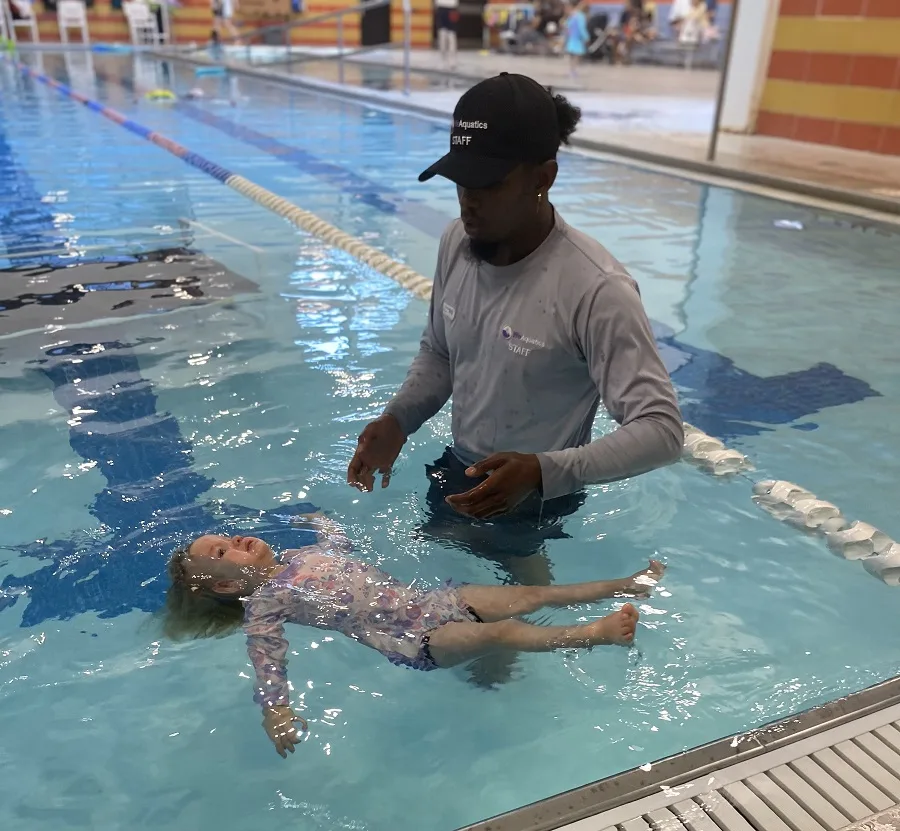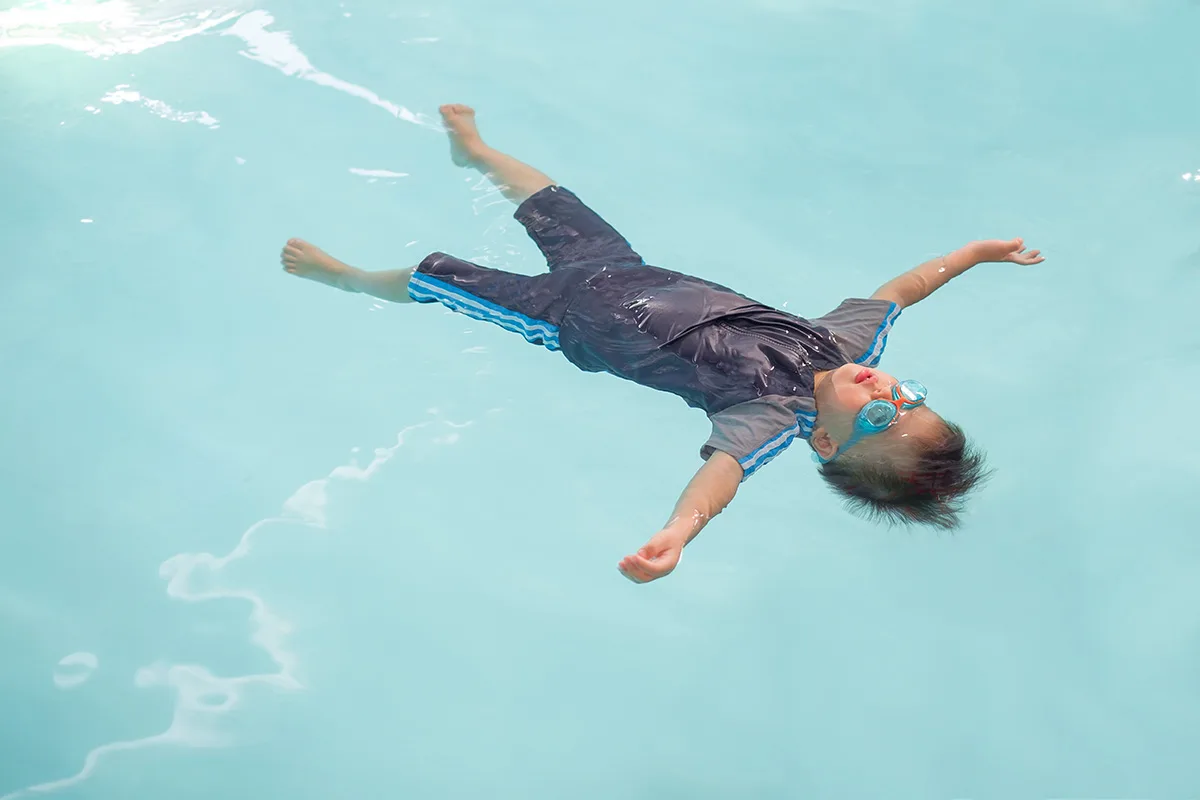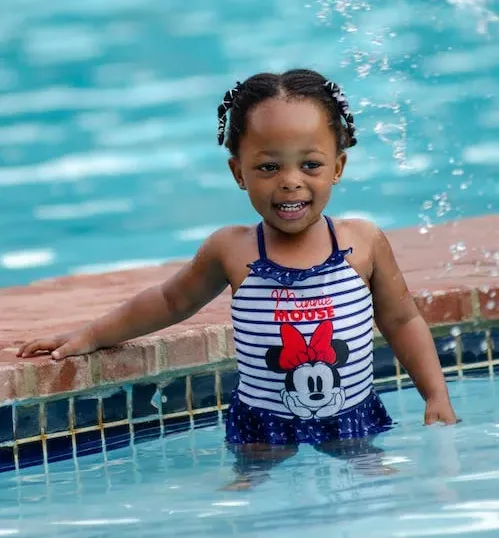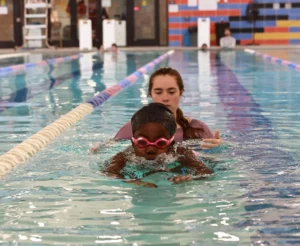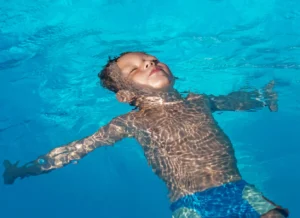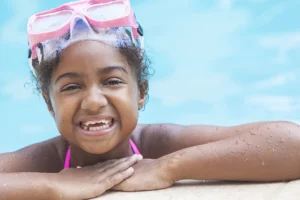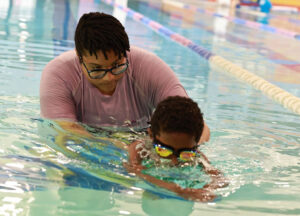Learn How to Teach a Baby to Swim with Confidence
It’s summertime. That means it’s the perfect time to splash around and create happy, safe aquatic memories with your baby! Is teaching your baby to swim safely on your summer to-do list but you’re not sure where to start? Then discover everything you need to know here, including how to teach your baby to swim, the importance of teaching a baby to swim, the benefits of teaching infants to swim, and the risks of them not learning this essential life skill.
Why is it essential to teach a baby to swim?
Teaching infants to swim is vital for several reasons:
-
- It helps develop their water confidence and promotes a positive relationship with the water from an early age.
- It equips them with essential life-saving water safety skills in case of accidental water immersion.
- Swimming offers physical and cognitive benefits, such as improved coordination, muscle strength, and sensory awareness.
Babies who learn to swim grow up comfortable and confident in the water. Teaching your baby to swim early sets a solid foundation for their future water adventures and prepares them for potential water hazards.
What are the benefits of swimming for babies?
Swimming offers numerous advantages for babies—even beyond the development of water skills.
-
- It helps strengthen their muscles and improve their coordination and balance.
- Water resistance enhances their motor skills and promotes healthy physical development.
- Swimming stimulates their sensory awareness through the different textures, temperatures, and movements they experience in the water.
- Swimming is known to impact an infant’s cognitive development positively. Combining physical activity, sensory stimulation, and instruction following helps foster neural connections and enhance brain development.
- Swimming sessions promote relaxation and better infant sleeping patterns, contributing to overall well-being.
What are the risks of not teaching infants to swim?
Failing to teach a baby to swim can pose significant safety risks. Each year 900 kids drown in the United States. It’s the leading cause of accidental death for children ages one to four.
Little ones are more prone to accidents, such as falling into a pool or body of water unattended. With proper swimming skills and water safety knowledge, though, your child will be equipped to handle these scenarios.
Teaching your baby to swim provides crucial survival skills and reduces the risk of water-related accidents. Even if you don’t have a pool at home, your child will eventually encounter water. This can be during visits to friends or family members with pools or when they are near natural bodies of water. Being prepared and ensuring your child has the skills to handle these situations significantly improves their safety.
When to start introducing a baby to the aquatic environment
The ideal time to start introducing a child to the pool is when they are around six months old. By this age, they have gained head and neck control, and they can sit up unassisted for a period of time, this makes adapting to the water environment easier.
What to teach your baby first
The first skill to teach your baby is floating on their back. Practice supporting their head and neck while gently encouraging them to relax and to float on their back. Gradually increase the time spent in this position as they become more comfortable and confident.
How to create a safe and fun learning environment
Ensure the water temperature is comfortable (between 78 and 88 degrees) and the pool or swimming area is free from hazards.
Holding your baby low in the water provides an opportunity for them to feel their weightlessness, and the support of the water on their limbs. Gently supporting them around the rib cage when in a vertical position.
Maintain constant eyes on, not letting your baby drink from the pool while holding them low in the water.
- Teaching Basic Skills
Once your baby is being low weightless and vertical, you can then begin to work on horizontal floating postures. Laying them on their back in the water, you can begin working on easing their head back into the water, not forcing them to place their head back but coaxing them by lightly touching where you want it to be.
Non-verbal children learn from their sensorimotor experience. Teaching them breath control may start in the pool or in the bathtub by gently pouring water over their head. You can listen for their breathing to see if they have actually held their breath. They may go quiet when the water is being poured, or you may notice that they cough. Coughing can indicate that they need more experience here to develop this skill but this is a great precursor to a full submersion in the pool.
Progressively introduce submersion, ensuring they learn to hold their breath before going underwater.
While supporting them in a vertical position, quickly dip your child to the chin and listen for breathing. If they go quiet it may be safe to say that they have held their breath. You can then do more partial submersions working your way to a full submersion. Once they have lost breath control and come up coughing, you sputtering you have gone too far.
While holding them you can go under quickly and bring them back up to air. Listen to their breathing. When they come back up, are they coughing? If they are coughing they have lost breath control. It may help to make the dip smaller, and the interval of the submersion shorter to see if this helps them maintain their breath control.
- Moving through the water
Infants are generally not swimmers. They will float but they will not begin to develop propulsive motor skills until they are close to 18 months old.
If they are older than a year, supporting their body at the ribcage as they practice moving forward towards a stimulus that will encourage them to kick and swim. Gradually reducing support as they develop their motor skills and gain more control over their movements.
- Kicking and stroke technique
Kicking and arm movements may be elementary at this point. Generally young kids are ready to begin learning strokes around 3 and a half, but breath control and confidence in the water lays the foundation for future swimming strokes.
Keeping Your Baby Safe
Keeping your baby safe in the water requires attention and vigilance.
-
- Supervise your baby at all times. Never leave your baby unattended near water, even for a few seconds.
- Give your full attention to your little one so you can respond quickly if needed.
- If you’re not there, designate a responsible adult to watch your baby during swimming sessions.
- Babies’ temperature fatigue very quickly. Keeping young ones in the water for 10-15 minute intervals can ensure your child remains comfortable and continues to enjoy the water. If they are cold, this leaves room for them not being happy and not having fun, which is the top priority when swimming with the family!
- Teach your baby water safety rules.
-
- When you teach a baby to swim, emphasize basic water safety rules.
- Teach them the importance of entering the water only with an adult present, not running near the pool, and understanding the difference between shallow and deep areas.
- Reinforce these rules consistently, and explain why they are essential for their safety.
- Avoid hazards in the water.
-
- Be sure the swimming area is free from hazards, such as sharp objects, slippery surfaces, or strong currents.
- Check the water quality to avoid swimming in unsafe conditions.
- Teach your child about potential dangers in and around water, such as drains, and emphasize the importance of avoiding them.
You invest in your baby’s safety, well-being, and enjoyment of the water when you swim with them. By swimming with your baby early in their life you can gradually introduce them to essential water skills and foster a positive relationship with the water.
Remember to create a comfortable learning environment, provide constant supervision, and reinforce water safety rules. With patience, consistency, and lots of practice, you can empower your baby to swim and enjoy the water safely.
Tips for Making Swimming an Enjoyable Activity for Your Baby
-
- Use colorful toys and floats to engage them and make swimming sessions enjoyable.
- Sing water-related songs to create a playful atmosphere.
- Gradually introduce new activities and challenges to keep them excited about swimming.
- Celebrate your baby’s achievements, and provide positive reinforcement during each swimming session.
- Encourage family participation to enhance bonding and create lasting memories.
We recommend Infant Swimming Resource (ISR) lessons to enhance your baby’s swimming journey. ISR provides specialized training programs that focus on water survival skills for infants and young children.
To learn more about ISR lessons and to find a certified instructor in the greater Washington, DC, area, visit our WeAquatics classes page for more information.

